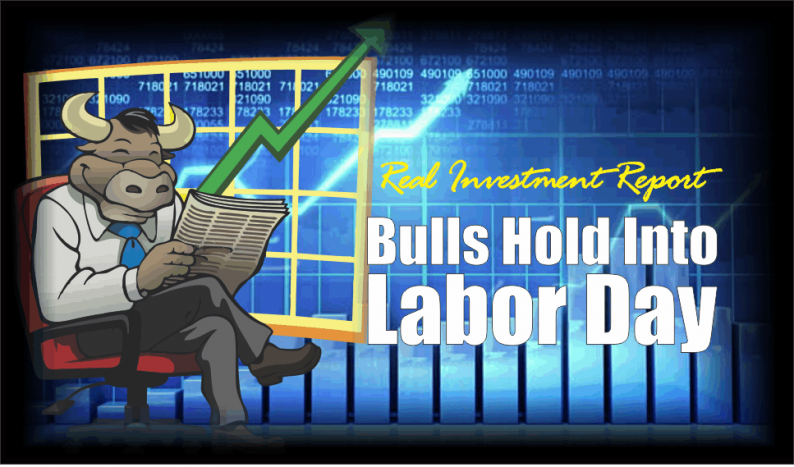
Last week, we discussed the breakout to all-time highs:
“Get out your party hats ladies and gentlemen, the market closed at all-time highs on Friday finally eclipsing the January peak. After 145 days of slogging, the ‘bull market is back, baby!’”
Over the last several months, we have been discussing the ongoing “pathways” leading us back to these current levels. Each breakout above previous resistance was used to add equity exposure into portfolios while maintaining some cash to hedge against a potential downside break.
However, as I laid out last week:
“While I point out the prevailing risks, and the disconnect between bullish sentiment and hard data, the reality is the bull market remains intact.
Over the last several months we have been tracking the progress of the S&P 500 with pathways back to ‘all-time’ highs. The very quick retest of support, as noted last week, set the stage for the push to market highs.”

As I noted last time:
“With portfolios still long-biased, the question is what happens next, and how to play it.
I have updated our pathway analysis to account for the breakout to new highs and the fact we are heading into September which has one of the poorest historical performance records.
- Pathway #1: An uninterrupted advance of the bull market with an expansion of volume and market breadth. This is a lower probability event currently given the extreme short-term overbought condition, light volume of the breakout and a negligible “buy signal” in place. (20%)
- Pathway #2a: Is a bit more of an “exuberant” advance early next week which pulls back to the recent breakout level. The pullback consolidates a bit, works off some of the overbought condition, and then begins the next advance. Such a pullback would turn the previous resistance into support and provide a short-term “buyable” entry. (30%)
- Pathway #2b: Is a higher probability event given the overbought conditions currently. A pullback to 2800-2820 which works off the overbought condition and builds support at previous bottoms. This would also coincide with a “September” type performance and would set the stage for a traditional year-end rally. This would provide the best opportunity to bring portfolios to target weights. (40%)
- Pathway #3: This path is the least likely currently, but should be considered nonetheless. With all of the risks laid out above, something that triggers a credit-related worry in the market could send stocks lower. There is strong support built at 2740 which should initially hold. If it doesn’t we have other issues to discuss. (10%)
Again, with portfolios primarily invested, there is little for us to do. We did let some weak performers go last week and will look for a pullback to add to winners and make some new bets.”
Currently, it is pathway #2a that continues to play out. This past week showed a bit of an exuberant jump in the markets as traders scrambled to “get long” following the breakout to new highs (albeit it was on very light volume and participation).

Nonetheless, the current breakout is bullish and any pullback in September that doesn’t violate any important support levels (technically) will provide an opportunity to increase equity exposure for a potential “year-end” advance.
With earnings season winding down, trade wars heating up (again), and the Fed committed to hiking rates further, there certainly seems to be plenty of reasons for something to “go wrong.”
However, so far, the bulls haven’t seemed to care about such “risks” at all.
Kevin Giddis, via Raymond James, summed this issue up well. (H/T to Gerry, my Canadian researcher)
“A lot of what we have seen in the month of August seems to suggest that while the U.S. economy is on very solid ground, corporate earnings continue to grow, confidence at a near term high, and the equity market wakes up looking to make a new record with almost every session, there is a sense of nervousness that something is going to go wrong soon.
Is this what a peak looks like?
The Fed keeps harping on the continuation of its tightening cycle even though wages aren’t really growing and the core rate of inflation vacillates back and forth between 2%, the Fed’s target.
Is it worrying investors that they are going too far too fast?
How about trade? If we (the U.S.) keep applying pressure to our trade partners by adding tariff after tariff, could that backfire on the U.S. and slow the economy without seeing prices rise?
As we climb this wall of worry, the bond market seems to be running in place, waiting for something else to happen. Maybe it’s the inversion of the curve, maybe it’s the continuation of a trade war, or maybe it’s a breakdown in the numbers; none of us really knows.
Then there’s the Fed. We are beginning to see more and more debate about whether the Fed might be going too far with its tightening policy. If the long end of the Treasury market doesn’t budge, and the Fed keeps tightening, the yield curve is likely going to invert. Historically, inversions haven’t ended well for the U.S. economy. The point that I am trying to make is that there are a number of balls in the air, and there is a good chance that not all of them will bounce.
Even in what appears to be the best of times, cracks may be starting to show that we are closer to the end vs. the beginning of what has been a miracle recovery.”


















Leave A Comment